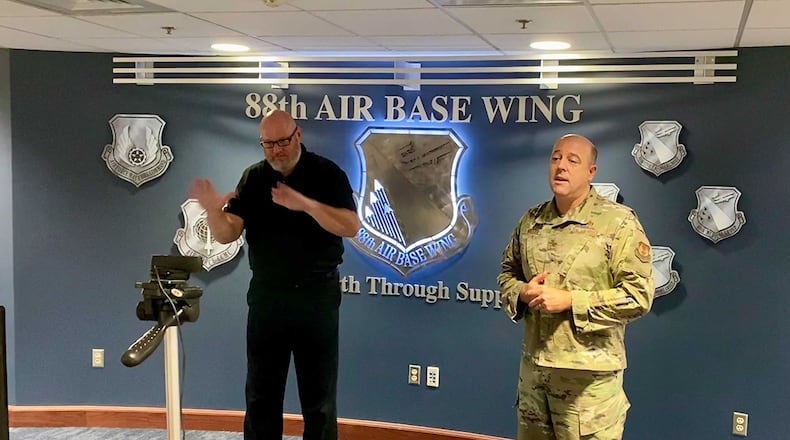“I am excited,” said Col. Patrick Miller, 88th Air Base wing commander and installation commander. “I am truly excited.”
Before the pandemic, the base was home to some 30,000 military and civilian employees. Air Force work has continued during COVID with many employees working remotely, and remote work may continue to be an option for some workers.
However, Miller cautioned during a Facebook Live meeting Wednesday that a state of a public health emergency remains in place until the end of the month, giving supervisors time to work out details. He also noted that base gate 15A, off Ohio 444, is still closed and under construction until mid-month.
“What I would ask folks is don’t rush back to Area A,” Miller said.
Credit: Wesley Farnsworth
Credit: Wesley Farnsworth
Col. Michael Crowder, the 88th Medical Group’s public health emergency officer, said up to 300 people can be organized outdoors without a waiver and indoor gathering capacity has been raised to 50%, limited by room size, with social distancing among those indoors still expected.
The decision to move to “alpha” was based “on the steady decline of new COVID cases over the past six weeks across Ohio,” the base announced on social media.
For the month of May, the base averaged less than one case per day; down from three cases per day in April, the base said. About 63% of the base’s active duty population and 43% of the base population have received at least one COVID vaccination.
Following Department of Defense guidelines, vaccinated base employees are no longer required to wear face coverings on the installation. There are some locations where masks will continue to be required, and those who have not received the vaccine must continue to wear masks.
Physical distancing and CDC guidelines will continued to be urged, Miller said.
“Just because we’re going back to ‘alpha,’ does not mean we’re going back to the pre-pandemic ... execution,” the commander said.
Military bases have a “health protection condition” or HPCON hierarchy or ranking of conditions.
HPCON 0 is “routine,” meaning the routine maintenance of everyday actions to stop the spread of germs is expected.
With the next condition, “alpha,” workers are expected to routinely clean and disinfect frequently touched objects and surfaces. If they’re sick, they should call a medical provider for instructions on receiving care before going to a clinic or hospital.
In the earliest weeks of the pandemic, first only essential workers, then just 10 percent of the base’s typical 30,000 workers were permitted to be physically on base.
By May 2020, commanders and directors were allowed to return up to 20% of their assigned workforce to the base.
And by September 2020, the move was made to condition “bravo,” letting commanders bring up to half of their workers to the base, although Miller has continually urged caution.
About the Author



